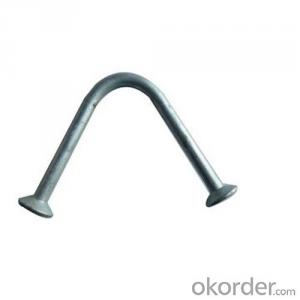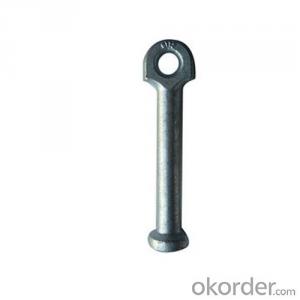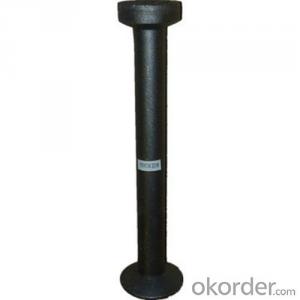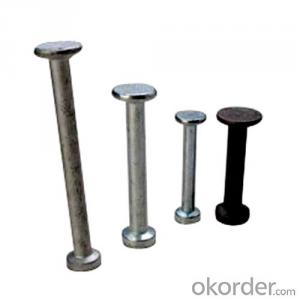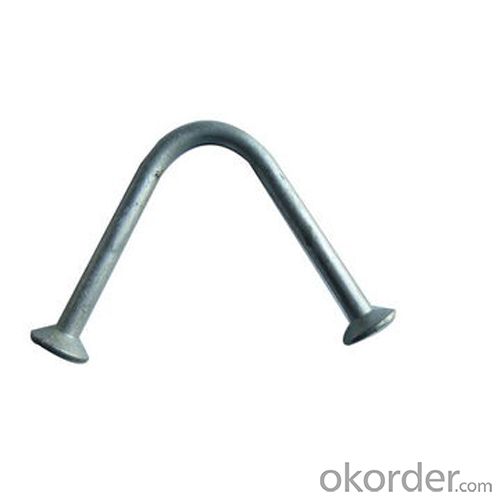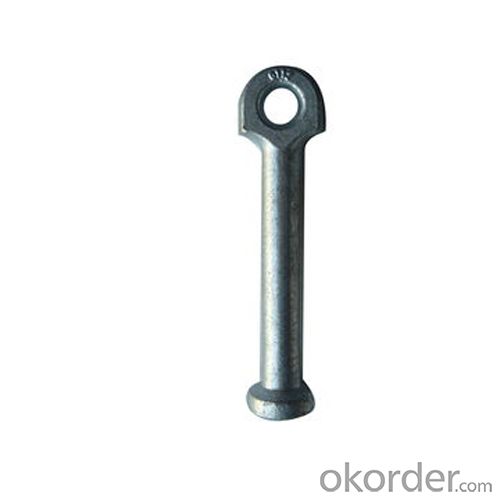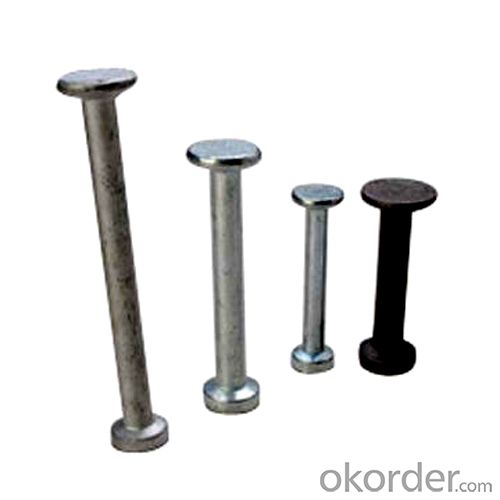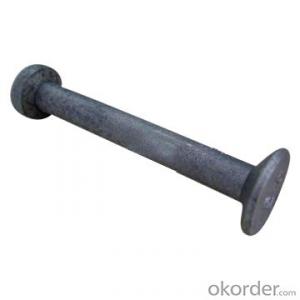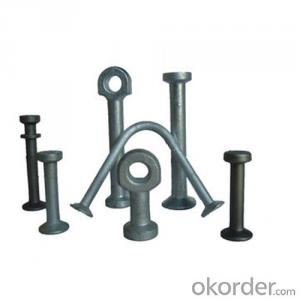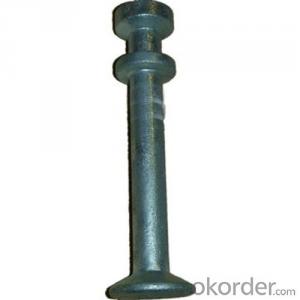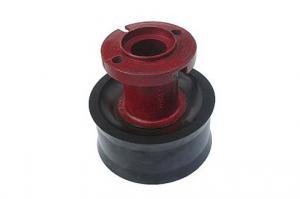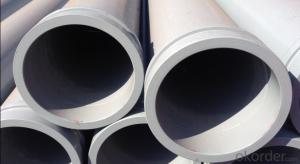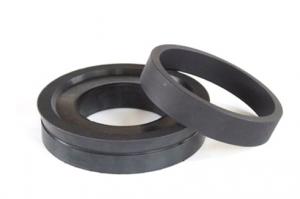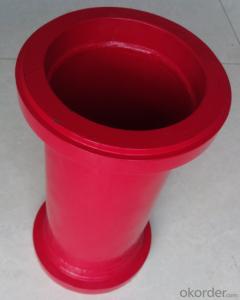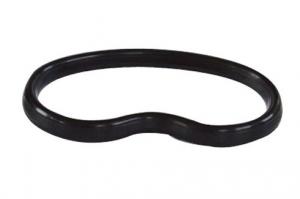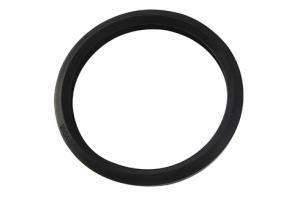Lifting Anchor Forged Straight Type Long Design V
- Loading Port:
- Tianjin
- Payment Terms:
- TT OR LC
- Min Order Qty:
- 100 pc
- Supply Capability:
- 10000 pc/month
OKorder Service Pledge
OKorder Financial Service
You Might Also Like
1. Specification:
Material: Carbon Steel, Forged
Finish: Self Colored, or Galvanized
Packaging: carton, then on pallets, or as customers' requirements
Stocks: we have stocks for regular sizes
Warning: never exceed working load limit
2. Products available:
Swift lift lifting eyes are used with the swift lift anchors to lift, handle and place precast concrete elements
3. Primary competitive advantages:
1. More than 10 years 4 years focus on building material manufacturing
Prompt delivery lead time within 25 days after confirming order
2. Eathu's products are enhanced by the factory QA and quality control checks during the production, if necessary each order can be send out with a certificate referring back to test
3. OEM/ODM capability: more then 10 years experience
Prompt Delivery
Quality Approvals
Reputation
Service
Prompt Reply within 24 Hours
Small Orders Accepted
Brand-name Parts
Country of Origin
Distributorships Offered
Electronic Link
Experienced Staff
4.Packaging and delivery:
Packaging details: goods packed in cartons and then on the pallet
Delivery detail: within 25 days after getting payment
Market:
Asia
Western Europe
Australasia
Central/South America
FAQ:
Q1: How long about delivery time Concrete Lifting anchors ?
A1: The delivery time will be very short, normally we keep the raw materials for old customers and sometime we also keep stock products to
make sure delivery time in any emergency cases.
Q2: How do we guarantee the quality of our Concrete lifting anchors?
A2: We have established an advanced quality management system which conducts strict quality tests at every step, from raw materials to the final product. At the same time, we provide extensive follow-up service assurances as required.
Q3: How soon can we receive the product after purchase?
A3: Within three days of placing an order, we will book the vessel for goods. The specific shipping date is dependent upon international and government factors, but is typically 7 to 30 workdays.
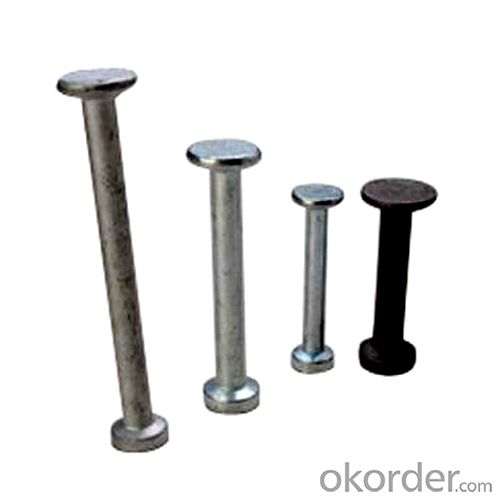
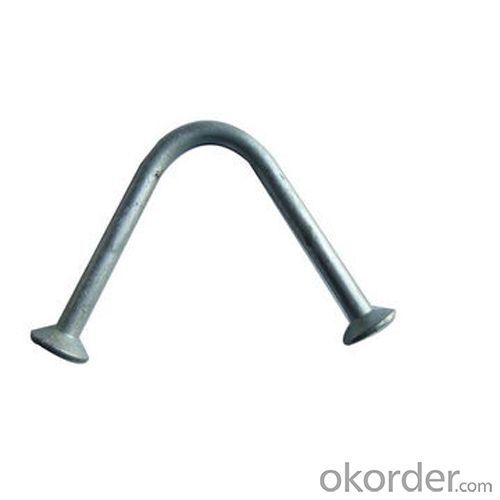
- Q: How does a concrete pump agitator motor prevent concrete from settling?
- Constantly agitating the mixture, a concrete pump agitator motor prevents the settling of concrete. Typically equipped with rotating paddles or blades inside the mixing drum, the motor ensures that the concrete remains in a homogeneous state. During transportation, concrete tends to separate as gravity and the natural settling of heavier aggregates take effect. This can lead to a non-uniform consistency, with denser materials sinking and water rising. To counteract this settling process, the agitator motor stirs the concrete continuously. By creating a turbulent flow within the mixing drum, the rotating paddles or blades prevent the heavier aggregates from settling, thus maintaining a consistent mixture. This agitation helps distribute the cement, aggregates, water, and any additional additives evenly throughout the concrete, resulting in a more reliable and uniform end product. By preventing concrete settling, the agitator motor ensures that the mixture remains consistently workable, free from blockages or inconsistencies, and suitable for pumping or pouring. This is particularly crucial in construction projects that require precise and consistent concrete placement. In conclusion, the agitator motor in a concrete pump prevents settling by continuously agitating the mixture, thus maintaining its homogeneity and ensuring a consistent flow during pumping or pouring operations.
- Q: How often should concrete pump hydraulic filters be inspected and replaced?
- Concrete pump hydraulic filters should be inspected and replaced on a regular basis, ideally every 500 hours of operation or according to the manufacturer's recommendations. Regular inspection and replacement of hydraulic filters help ensure the proper functioning and longevity of the concrete pump.
- Q: Are there any specific guidelines for the installation of hydraulic filters or strainers in concrete pump spare parts?
- Specific guidelines exist for the installation of hydraulic filters or strainers in concrete pump spare parts. These guidelines should be followed to ensure proper installation and functionality of the filter or strainer. Here are some important considerations: 1. Size and Compatibility: It is crucial to choose a hydraulic filter or strainer that is the correct size and compatible with the specific make and model of the concrete pump. Failure to do so can lead to inadequate filtration or damage to the hydraulic system. 2. Location: The filter or strainer should be installed in a location that allows for easy access and maintenance. It should be positioned in a way that facilitates proper filtration without obstructing the flow of hydraulic fluid. 3. Mounting: To prevent movement or vibration during operation, the filter or strainer must be securely mounted. It is essential to adhere to the manufacturer's instructions regarding proper mounting techniques and torque specifications. 4. Orientation: Pay attention to the recommended orientation of the filter or strainer. Some filters have specific flow direction requirements, and incorrect installation can impact their performance and efficiency. 5. Protection: Consider adding extra protection, such as a guard or shield, to shield the filter or strainer from external factors like debris or impacts. This can extend the lifespan and effectiveness of the filter. 6. Maintenance: Regularly inspecting and cleaning the filter or strainer is important to ensure optimal functioning. Adhere to the manufacturer's recommended maintenance schedule and procedures for replacement or cleaning to maintain efficient filtration. Remember to consult the manufacturer's instructions and guidelines for the specific hydraulic filter or strainer being installed, as they may have unique recommendations or requirements for their product.
- Q: How often should hopper screens be cleaned or replaced?
- Hopper screens should be cleaned or replaced on a regular basis, typically every 3 to 6 months, depending on usage and the type of materials being processed. Regular cleaning of the hopper screens is essential to maintain optimal performance and prevent clogging or blockages. If the screens become excessively dirty or damaged, they should be replaced immediately to ensure uninterrupted flow of materials and prevent any potential damage to the equipment. Regular maintenance and inspections of the hopper screens will help to prolong their lifespan and ensure smooth operation of the entire system.
- Q: Are there any specific guidelines for the installation of wear plates or cutting rings in concrete pump spare parts?
- Specific guidelines exist for the installation of wear plates and cutting rings in concrete pump spare parts, as they are crucial for the proper functioning and longevity of the pump. To begin, it is important to thoroughly clean the surface where the wear plate and cutting ring will be installed, removing any debris, dust, or old material to ensure a smooth and secure fit. Before installation, it is necessary to inspect the wear plate and cutting ring for any damage or defects. Any worn-out or damaged parts should be replaced to prevent any potential issues during operation. To aid in alignment and ease of installation, a thin layer of lubricant or grease should be applied to the surface where the wear plate and cutting ring will be installed. The wear plate and cutting ring should then be carefully aligned with the designated slots or grooves in the concrete pump. Accurate positioning is crucial to avoid misalignment or premature wear. Appropriate tools or equipment should be used to secure the wear plate and cutting ring in place, such as tightening bolts, screws, or other fasteners. It is essential to follow the manufacturer's instructions and torque specifications for proper installation. After installation, a visual inspection should be performed to ensure that the wear plate and cutting ring are securely in place and correctly aligned. Any signs of misalignment or loose parts should be addressed immediately. Regular maintenance and inspection of the wear plates and cutting rings are essential to identify any signs of wear or damage. It is advisable to follow the manufacturer's recommendations for maintenance intervals and replacement schedules. By adhering to these specific guidelines, the proper installation and function of wear plates and cutting rings in concrete pump spare parts can be ensured, resulting in improved performance and an extended lifespan for the equipment.
- Q: Can I get spare parts for both concrete pumps with and without agitators?
- Spare parts for both types of concrete pumps, whether they have agitators or not, are readily available. Numerous manufacturers and suppliers offer an extensive selection of spare parts to guarantee the efficient functioning and upkeep of these machines. Wear plates, cutting rings, delivery cylinders, pistons, seals, hoses, valves, and filters are among the many spare parts provided. To determine the availability and cost of spare parts for both types of pumps, it is advisable to reach out to the manufacturer or authorized dealers of the concrete pump brand you are utilizing.
- Q: Are there any specific guidelines for the installation of control valves or solenoids in concrete pump spare parts?
- Yes, there are specific guidelines for the installation of control valves or solenoids in concrete pump spare parts. Here are some general guidelines to consider: 1. Compatibility: Ensure that the control valves or solenoids you are installing are compatible with the concrete pump spare parts. Check the manufacturer's specifications and guidelines for the appropriate model and size. 2. Proper Positioning: Install the control valves or solenoids in a position that allows for easy access and maintenance. It should be easily visible and reachable for any adjustments or repairs. 3. Mounting: Securely mount the control valves or solenoids to prevent any vibrations or movements during operation. This will ensure the stability and longevity of the components. 4. Electrical Connections: Follow the electrical wiring instructions provided by the manufacturer. Make sure to connect the control valves or solenoids to the appropriate power source and ensure proper grounding to prevent any electrical hazards. 5. Sealing: Apply appropriate sealing materials, such as gaskets or O-rings, to ensure a tight and leak-free connection between the control valves or solenoids and other components. This will prevent any fluid or air leakage. 6. Testing: After installation, it is essential to thoroughly test the functionality of the control valves or solenoids. Check for any leaks, proper operation, and responsiveness to control signals. Any issues should be addressed and resolved before putting the concrete pump into operation. It is important to note that these guidelines are general and may vary depending on the specific manufacturer's recommendations and the design of the concrete pump spare parts. Always refer to the manufacturer's guidelines and instructions for the specific control valves or solenoids being used.
- Q: What are the preventive measures for concrete pump?
- When installing and designing pipes, avoid 90 as much as possible. And S shaped bends.
- Q: Is the main pump of the concrete pump electric control or hydraulic control?
- General Separated and Closed Open Electromagnet Control Displacement (Current)
- Q: How often should hydraulic pumps be inspected or replaced in a concrete pump?
- Hydraulic pumps in a concrete pump should be inspected regularly to ensure their proper functioning and prevent any potential issues. The frequency of inspections depends on various factors such as the intensity of use, operating conditions, and manufacturer's recommendations. Generally, it is recommended to inspect hydraulic pumps in a concrete pump every 500 to 1,000 operating hours or at least once a year, whichever comes first. However, if the pump is being used in harsh or demanding conditions, more frequent inspections may be necessary. Replacement of hydraulic pumps should be based on their condition and the recommendations of the manufacturer. If the pump shows signs of significant wear and tear, leaks, reduced performance, or any other issues that cannot be resolved through maintenance or repair, it may be necessary to replace the hydraulic pump to ensure the safe and efficient operation of the concrete pump.
Send your message to us
Lifting Anchor Forged Straight Type Long Design V
- Loading Port:
- Tianjin
- Payment Terms:
- TT OR LC
- Min Order Qty:
- 100 pc
- Supply Capability:
- 10000 pc/month
OKorder Service Pledge
OKorder Financial Service
Similar products
Hot products
Hot Searches
Related keywords
